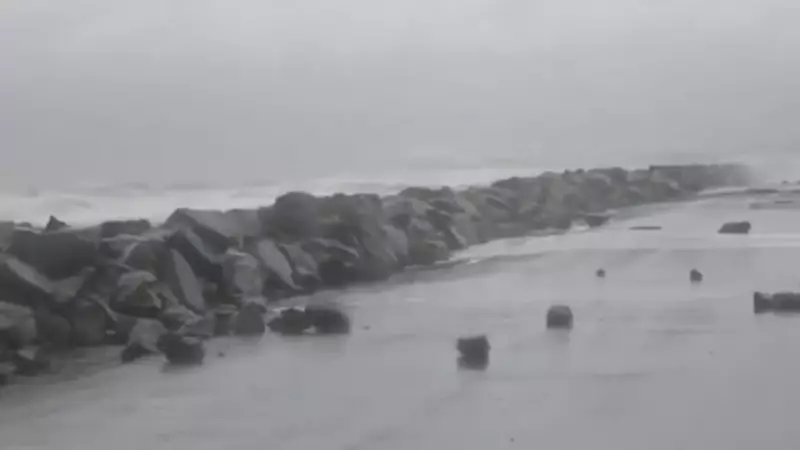
ANDHRA PRADESH: Coastal areas along the Kakinada-Uppada beach stretch in Andhra Pradesh are experiencing severe weather conditions as Cyclone Mocha gains strength over the Bay of Bengal. The sea has turned increasingly turbulent, with strong winds creating dangerous conditions along the shoreline.
Visual Evidence Shows Nature's Fury
Disturbing videos emerging from the region capture the dramatic transformation of normally calm waters into churning, violent waves. The footage shows seawater rising significantly higher than usual, crashing against the coast with unprecedented force that has left local residents and authorities deeply concerned.
Immediate Impact on Coastal Communities
Fishermen communities have been particularly affected, with many forced to suspend all fishing activities and secure their boats. The rough sea conditions have made any maritime activity extremely hazardous, threatening the livelihoods of those dependent on the sea.
Local authorities have stepped up monitoring efforts along vulnerable coastal sections. Emergency response teams remain on high alert, prepared to initiate evacuation procedures if the situation deteriorates further.
Weather Department's Stern Warning
The India Meteorological Department has issued multiple alerts for the region, forecasting:
- Increasing wind speeds reaching 60-70 kmph
- Heavy to very heavy rainfall in coastal districts
- Potential storm surge in low-lying areas
- Continued rough sea conditions for the next 48 hours
Precautionary Measures Activated
Coastal disaster management teams have implemented several safety protocols:
- Beach access restrictions in affected areas
- Continuous monitoring of sea conditions
- Regular updates to fishing communities
- Emergency shelters prepared for potential evacuations
Residents in coastal villages have been advised to remain vigilant and avoid venturing near the shoreline until the cyclone threat subsides completely. The situation remains dynamic, with weather officials closely tracking Cyclone Mocha's movement and potential landfall patterns.





